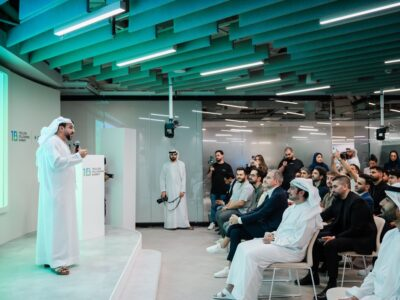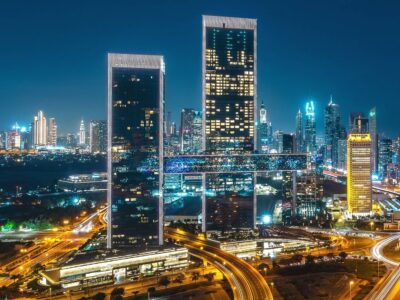UAE real estate sector 2029 forecasts show the market is on track to reach a massive $759 billion. This growth is being powered by strong demand in Dubai and Abu Dhabi, where both residential and commercial property markets are witnessing a boom. Off-plan projects, luxury homes, and stable rental yields are among the key drivers. With government policies encouraging investment and infrastructure development expanding rapidly, the UAE property sector continues to attract global attention.
Why the Surge in UAE Real Estate?
The UAE real estate sector has already been one of the region’s most dynamic industries. Analysts expect its total market value to rise to $759 billion by 2029, reflecting not only higher property prices but also a surge in transaction volumes and new projects.
Several factors are fueling this rise. Foreign direct investment continues to pour in thanks to favorable tax laws, residency schemes, and investor-friendly regulations. Off-plan property sales, where buyers purchase before completion, are providing flexibility and affordability, keeping the market liquid. Additionally, a growing appetite for luxury homes from high-net-worth individuals is creating strong upward pressure on prices in premium areas.

Dubai and Abu Dhabi at the Center of Growth
Dubai and Abu Dhabi remain the two powerhouses of the UAE real estate market. In Dubai, property sales in the second quarter of 2025 reached nearly AED 154 billion, up more than 44 percent year-on-year. Both total sales and secondary sales saw double-digit growth. Lease activity also increased, with residential contracts climbing over 11 percent compared to the previous year.
Abu Dhabi has also shown strong momentum. Average property sales prices rose by more than 12 percent in the same quarter, while total sales climbed around 9 percent. The secondary market in Abu Dhabi was particularly strong, growing by more than 30 percent. Lease contracts increased by almost 10 percent, showing steady rental demand.


Both emirates are also expanding commercial space. Abu Dhabi added nearly 80,000 square meters of office stock in mid-2025, while Dubai delivered new premium floors in major business districts, with more expected in the coming years.
Off-Plan Properties Gaining Popularity
One of the biggest growth drivers is the popularity of off-plan property sales. These projects allow buyers to invest before construction is completed, often at lower prices and with flexible payment plans. Developers have been launching a wave of new off-plan projects, creating options for both investors and end-users.
Off-plan properties are particularly attractive to international buyers who see the UAE as a stable and safe market. They are also a way for developers to secure financing during construction, ensuring that projects move forward even in competitive conditions.
The Rise of Luxury and Branded Residences
Luxury housing is another sector that continues to outperform. High-net-worth individuals are seeking premium properties such as branded residences, waterfront villas, and apartments with world-class amenities. These homes are not just investments; they also represent lifestyle and status.
Dubai in particular has become a hub for luxury property transactions, attracting billionaires, celebrities, and global business leaders. With prime locations, cutting-edge architecture, and exclusive services, luxury properties are expected to remain one of the strongest growth segments in the UAE real estate sector leading up to 2029.
Rental Market Stability
The rental market is also contributing to overall sector strength. Demand for leases has been climbing steadily in both Dubai and Abu Dhabi. This is partly due to population growth, as the UAE attracts professionals, entrepreneurs, and expatriates from across the globe.
Stable rental yields make UAE real estate appealing to investors. Even those buying property for investment rather than occupancy benefit from consistent income streams. With growing lease demand, landlords have stronger bargaining power, and this in turn encourages further investment into the rental property sector.
Expanding Commercial Real Estate
While residential real estate is grabbing most headlines, commercial real estate is also expanding at a steady pace. Abu Dhabi has significantly increased its office stock and is expected to continue delivering more premium space over the next few years. Dubai remains a regional hub for finance and trade, and developments in areas like the Dubai International Financial Centre (DIFC) are adding modern, high-quality office buildings.
In addition to traditional office spaces, there is rising interest in logistics hubs, warehouses, and data centers. These are becoming increasingly important as the UAE positions itself as a key global hub for trade, technology, and digital business.
Challenges Facing the Market
Despite the strong outlook, the UAE real estate sector faces several risks that could affect its growth. Oversupply is one of the most significant. With so many new projects being launched, there is always the danger that supply could outpace demand in certain areas, leading to price corrections.
There are also concerns about affordability. If prices rise too quickly, middle-income buyers may be priced out of the market, reducing overall demand. Interest rate movements and financing costs could also slow down sales, especially for mortgage-backed buyers.
Global factors such as economic downturns, oil price volatility, or geopolitical instability in the region could impact foreign investment flows. Regulatory changes, while generally supportive, could also shift market dynamics if ownership or tax rules are adjusted in the future.
Outlook for 2029
Looking ahead, the UAE real estate sector appears set for continued growth, but with some adjustments along the way. By 2029, the market is projected to reach $759 billion in total value, supported by strong residential and commercial activity.
Dubai and Abu Dhabi will remain the key markets, but emerging emirates like Ras Al Khaimah are expected to grow at a faster pace percentage-wise. Large mixed-use developments combining housing, retail, leisure, and business space will become more common. Infrastructure projects such as metro expansions, highways, and smart city initiatives will add further value.

Technology will also play a larger role in the sector. Digital property platforms, virtual reality showrooms, and smart home features are becoming standard. Sustainability is another rising theme, with developers increasingly integrating green building practices and energy-efficient designs.
If supply and demand remain balanced, the UAE will continue to attract both investors and residents. The focus will likely shift toward maintaining quality, enhancing lifestyle value, and ensuring long-term stability in the property market.
Conclusion
The UAE real estate sector is on track to reach a valuation of $759 billion by 2029. Dubai and Abu Dhabi are leading this boom with record sales, strong rental growth, and expanding commercial space. Off-plan properties and luxury homes remain the most popular choices for investors, while government policies and infrastructure development provide long-term support.
However, challenges such as potential oversupply and affordability issues remain. Managing these risks will be key to sustaining growth. For investors, developers, and residents, the years ahead promise opportunity, but also the need for careful planning and awareness of market dynamics.
Do follow UAE Stories on Instagram
Read Next –Sustainability Initiatives in Dubai Homes You’ll Want to Embrace















